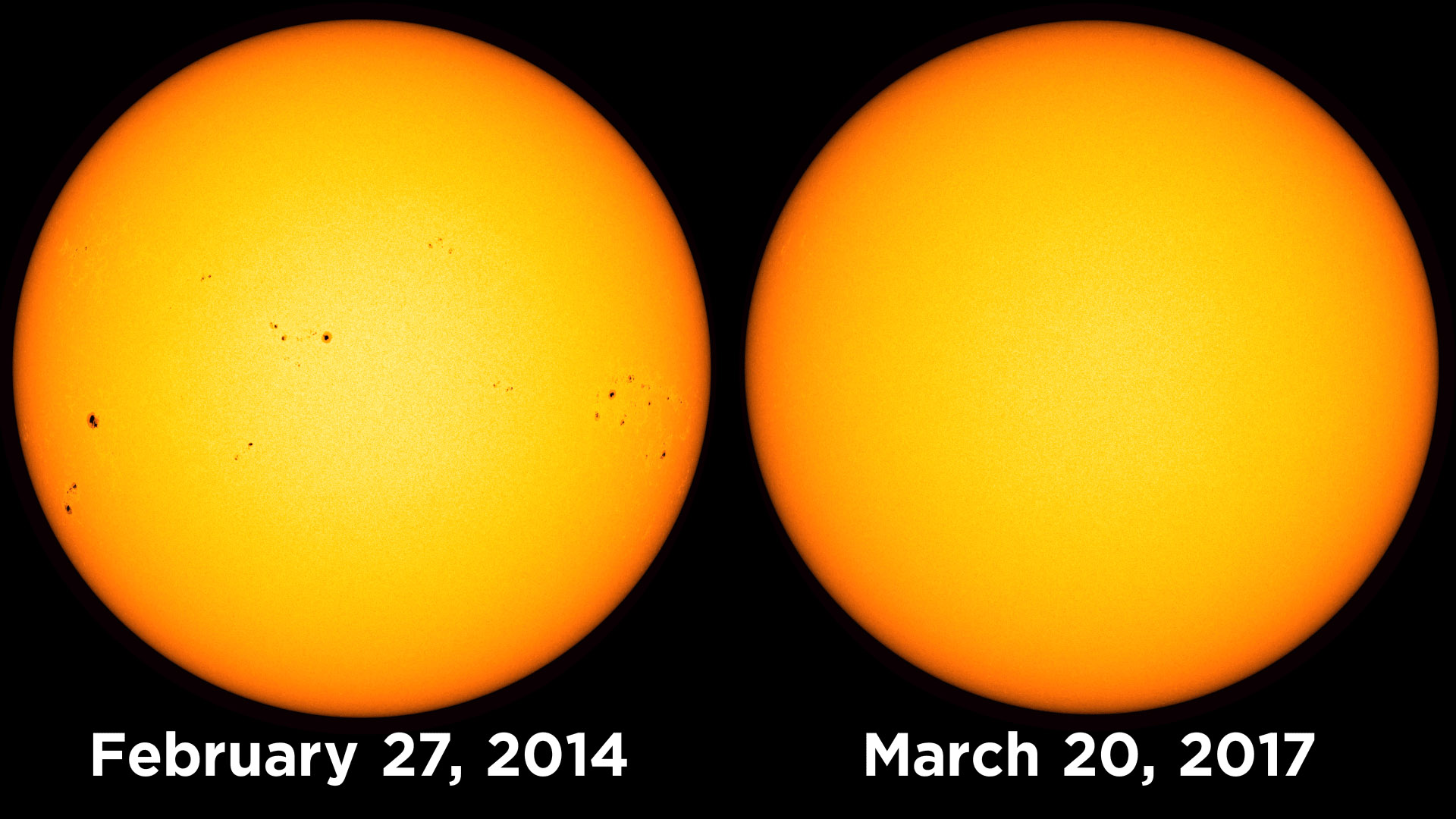Longer-Lasting Coronal Holes and Space Junk During Solar Minimum (Video)
The sun protects humanity from exposure to cosmic rays and keeps space junk at bay, but that protection will be reduced in 2019 as the sun enters its solar minimum, according to a new NASA video.
Change is a part of most systems in the universe, and Earth's sun is no exception. In a video from the Science@NASA series, Dean Pesnell of NASA's Goddard Space Flight Center in Maryland discusses how the sun experiences regular changes to its surface. In 2019, the sun will reach its solar minimum, the time when it has its lowest number of sunspots. The number of these blisters on the sun's surface will decrease until 2019 to 2020. After that, the sun will begin approaching the other side of its 11-year activity cycle, solar maximum.
The video shows a side-by-side comparison of the sun's dotted surface in 2014 looking quite different from this year's blemish-free appearance.
"While intense activity such as sunspots and solar flares subside during solar minimum, that doesn't mean the sun becomes dull," the video's narrator said. "Solar activity simply changes form."

The video also features an animation illustrating how solar activity affects the proximity of space junk — natural and human-made objects orbiting Earth — to the planet's surface. During solar minimum, the outer layer of Earth's atmosphere contracts. This allows space junk to linger in orbit around the planet. According to the video, those changes include the shrinking of the protective magnetic shield offered by the sun. This allows cosmic rays from distant supernovae to come closer to the planet's surface than normal. These fast-moving particles can be a threat to astronauts and space crews working in orbit, the video says.
Large magnetic gaps on the sun's surface also develop during solar minimum. Known as coronal holes, these vast regions of the star's atmosphere remain open for longer periods of time than usual, about six months or more. The holes allow for "streams of solar particles" to escape the sun as solar wind. When they interact with Earth's atmosphere, they cause space weather, which can include "temporary disturbances in the Earth's magnetosphere" — also known as geomagnetic storms — that cause, among other things, disruptions to communications and navigation systems, the video says.
Like a pendulum, in about four years the sun will begin exiting this phase and approach solar maximum.
Get the Space.com Newsletter
Breaking space news, the latest updates on rocket launches, skywatching events and more!
Space.com senior producer Steve Spaleta contributed to this report.
Follow Doris Elin Salazar on Twitter @salazar_elin. Follow us @Spacedotcom, Facebook and Google+. Original article on Space.com.
Join our Space Forums to keep talking space on the latest missions, night sky and more! And if you have a news tip, correction or comment, let us know at: community@space.com.

Doris is a science journalist and Space.com contributor. She received a B.A. in Sociology and Communications at Fordham University in New York City. Her first work was published in collaboration with London Mining Network, where her love of science writing was born. Her passion for astronomy started as a kid when she helped her sister build a model solar system in the Bronx. She got her first shot at astronomy writing as a Space.com editorial intern and continues to write about all things cosmic for the website. Doris has also written about microscopic plant life for Scientific American’s website and about whale calls for their print magazine. She has also written about ancient humans for Inverse, with stories ranging from how to recreate Pompeii’s cuisine to how to map the Polynesian expansion through genomics. She currently shares her home with two rabbits. Follow her on twitter at @salazar_elin.









